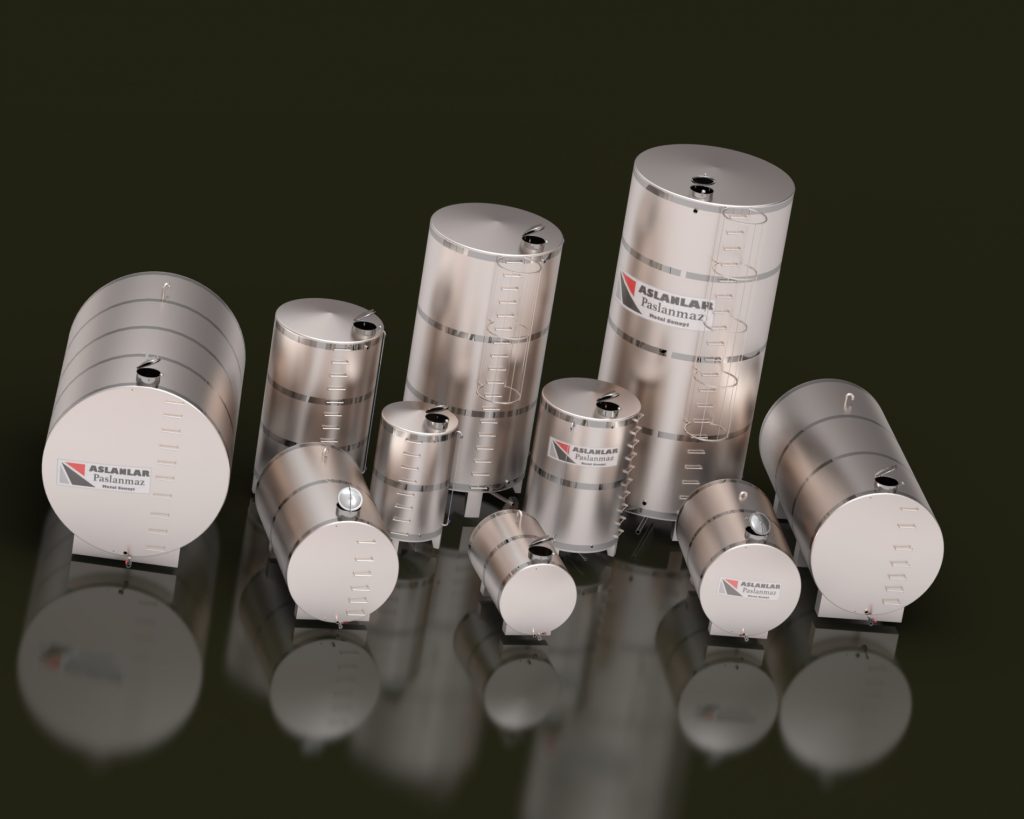Why Are Stainless Water Tanks More Durable?
Introduction
Water storage is essential in various industries, households, and commercial establishments. Among the different tank materials available, stainless steel stands out due to its exceptional durability, resistance to corrosion, and hygienic properties. But what makes stainless steel water tanks last longer compared to other materials? Let’s dive deep into the reasons behind their superior durability.
What Makes Stainless Steel Unique?
Stainless steel is an alloy composed primarily of iron, chromium, nickel, and molybdenum. These elements work together to enhance its strength, resistance to corrosion, and durability.
- Chromium (Cr): Forms a protective oxide layer that prevents rust and corrosion.
- Nickel (Ni): Increases toughness and enhances resistance to extreme temperatures.
- Molybdenum (Mo): Improves resistance to pitting and crevice corrosion, especially in salty or acidic environments.
This unique combination makes stainless steel highly resilient and long-lasting.
Corrosion Resistance: A Key Factor
One of the primary reasons stainless steel water tanks are more durable is their resistance to corrosion. Unlike mild steel or iron tanks, which rust over time, stainless steel naturally forms a passive oxide layer that shields it from oxidation.
- No Rust Formation: Unlike iron tanks, stainless steel does not oxidize when exposed to moisture.
- Chemical Resistance: Can withstand exposure to acidic or alkaline substances without deteriorating.
- Extended Lifespan: Due to its corrosion-resistant properties, stainless steel water tanks last decades without significant wear.
In contrast, plastic and concrete tanks degrade over time due to exposure to UV rays, chemicals, and temperature fluctuations.
Strength and Structural Integrity
Stainless steel is known for its exceptional tensile strength and ability to withstand high pressure. This makes it ideal for applications where tanks need to endure external forces or heavy loads.
- Impact Resistance: Unlike plastic tanks that can crack under force, stainless steel tanks are resistant to dents and deformations.
- High Pressure Tolerance: Suitable for elevated water storage systems and industrial applications.
- Leak Prevention: Strong welded joints minimize the risk of leaks, unlike plastic tanks that may develop cracks over time.
This strength ensures that stainless steel tanks maintain their structural integrity for years.
Longevity and Low Maintenance
Stainless steel water tanks have an extended lifespan compared to other materials. Their minimal maintenance requirements make them a cost-effective choice in the long run.
- Minimal Cleaning Needed: Stainless steel does not accumulate algae, mold, or bacteria as easily as plastic or concrete tanks.
- Less Frequent Repairs: Unlike plastic tanks that degrade under UV exposure, stainless steel remains intact.
- No Coating Required: Unlike mild steel tanks, which require protective coatings to prevent rust, stainless steel remains naturally protected.
A well-maintained stainless steel tank can last 40+ years, making it a smart long-term investment.
Resistance to Extreme Temperatures
Stainless steel tanks can withstand both high and low temperatures without losing their structural integrity.
- Withstands Freezing Conditions: Unlike plastic tanks that can crack in freezing temperatures, stainless steel remains intact.
- Heat Resistance: Can handle boiling water and extreme heat without warping or melting.
This makes stainless steel tanks suitable for a wide range of climates and industrial applications.
Hygienic and Non-Toxic Properties
Water safety is a major concern, and stainless steel ensures that stored water remains clean and uncontaminated.
- Non-Reactive Material: Does not release harmful chemicals or toxins into the water.
- Prevents Bacterial Growth: Unlike plastic tanks, which may develop biofilm over time, stainless steel remains sanitary.
- Easy to Clean: A simple rinse is often enough to keep the tank hygienic.
For hospitals, food processing plants, and pharmaceuticals, stainless steel is the preferred choice for water storage.
Environmental Benefits of Stainless Steel Tanks
- 100% Recyclable: Stainless steel is one of the most sustainable materials, reducing environmental impact.
- Less Waste Over Time: Due to their long lifespan, fewer replacements are needed compared to plastic or concrete tanks.
- Energy Efficient: Manufacturing processes for stainless steel are becoming more eco-friendly.
Choosing stainless steel contributes to sustainability and environmental conservation.
Comparisons with Other Water Tank Materials
Material | Durability | Corrosion Resistance | Maintenance | Hygiene |
Stainless Steel | 40+ years | Excellent | Low | High |
Plastic | 10-20 years | Poor (UV degradation) | Moderate | Moderate |
Concrete | 20-30 years | Moderate | High (cracks, algae) | Moderate |
Mild Steel | 10-15 years | Poor (rusts easily) | High | Low |
How to Maintain Stainless Steel Water Tanks for Longevity
- Regularly inspect for any weld cracks or damage.
- Clean with mild detergents and avoid harsh chemicals.
- Drain and flush the tank periodically to remove sediment buildup.
Proper maintenance ensures stainless steel tanks remain in excellent condition for decades.
Cost vs. Durability: Is It Worth the Investment?
Although stainless steel tanks have a higher upfront cost than plastic or mild steel tanks, their durability, low maintenance, and long lifespan make them a cost-effective choice over time.
Frequently Asked Questions (FAQs)
With proper maintenance, it can last 40+ years.
No, they are corrosion-resistant due to the chromium content.
Yes, they are more durable, hygienic, and eco-friendly.
Yes, they perform well in both high and low temperatures.
Yes, they are 100% recyclable and environmentally friendly.



